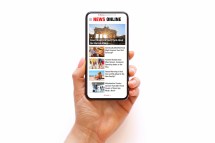High-Performance Liquid Chromatography (HPLC) method development is a critical process in analytical chemistry, enabling precise separation, identification, and quantification of components in complex mixtures. Innovations in this field are revolutionizing how scientists approach HPLC method development, enhancing efficiency and accuracy.
Understanding HPLC Method Development
HPLC method development involves selecting appropriate conditions such as the type of column, mobile phase composition, flow rate, and detection methods to effectively separate analytes. The goal is to establish a reliable and reproducible method tailored for specific samples and analytical goals.
Advancements in Instrumentation Technology
Modern HPLC systems incorporate advanced detectors like diode array detectors (DAD), mass spectrometry (MS) interfaces, and enhanced autosamplers. These technological upgrades allow for more sensitive detection and faster analysis times, facilitating quicker method optimization.
Automated Software Tools for Optimization
Software solutions now assist analysts by automating parameter screening through design of experiments (DoE) approaches. These tools can predict optimal conditions by analyzing multiple variables simultaneously, reducing trial-and-error time significantly during method development.
Green Chemistry Initiatives in HPLC
Sustainability has become integral to modern laboratory practices. Innovations include the use of eco-friendly solvents and minimizing solvent consumption through ultrahigh-performance liquid chromatography (UHPLC). These green approaches decrease environmental impact without compromising analytical quality.
Integration of Artificial Intelligence (AI)
AI-driven algorithms are beginning to support decision-making in HPLC method development by analyzing vast datasets from previous experiments. This integration enhances predictive capabilities and helps tailor methods to complex sample matrices more efficiently than traditional methods.
The landscape of HPLC method development continues to evolve with these innovations driving improvements in speed, precision, sustainability, and automation. Embracing these advancements allows laboratories to achieve superior analytical results while optimizing resources.
This text was generated using a large language model, and select text has been reviewed and moderated for purposes such as readability.






